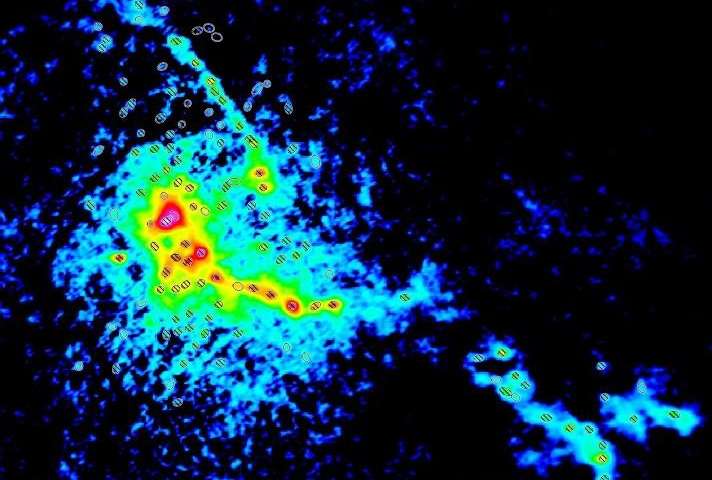The laws of star formation challenged

The active star-formation region W43-MM1, as observed using the world's largest millimetre interferometer, ALMA. The high number of star formation sites, known as cores and here identified by ellipses, are evidence of the intense star formation activity in this region. Credit: ESO/ALMA/F. Motte/T. Nony/F. Louvet/Nature Astronomy.
A report published lately in the journal of nature astronomy says that few pieces of research have questioned the authenticity of the astrophysical law given by Edwin Salpeter in 1955. These scientists belong to a quite known internal group of researchers at Atomic Energy Commission, Université Grenoble Alpes, and the French Alternative Energies. A study on the molecular clouds nearest to our solar system shows that the IMF1 is the result of the CMF2. Now what is IMF1, it is the mass distribution of the stars at birth, whereas CMF2 is the mass distribution of cores. Now the point to be noted is that this assumption is true for the clouds which are not dense and therefore not the depiction of the entire galaxy. So, the question raised was, is this assumed relation between CMF and IMF is applicable to the whole galaxy?
Researchers at the Astrophysics, Instrumentation and Modeling Laboratory and the Grenoble Institute of Planetology and Astrophysics have raised these concerns. So they opted to study star formation in a region W43-MM1. They chose this region because its structure is similar to most of the existent molecular clouds in our galaxy. And they came to the conclusion that the distribution of the mass doesn't obey the astrophysical law at all.
The research showed that in the region W43-MM1 cloud, the massive cores were in quite an abundance whereas the cores which were comparatively less massive were under-represented. The mass distribution of the young star was nowhere same; which is quite an opposing view to the already followed assumption. Thus this conclusion paves ways for new inquiry; scientists are under pressure to re-access their assumptions regarding the star formation. Additionally, they are forced to dig out the relationship between CMF and IMF or widely the general nature of the IMF. Thus, this international team of researchers along ALMA will continue to work on their inquiry by studying some more regions like W43-MM1 in order to access that whether the characteristics of this region can be generalized or not.
Reference: https://phys.org/news/2018-04-laws-star-formation.html
Thank you for your contribution. Dont forget to link references and sources when applicable!
=======================================================================================
This post was upvoted and resteemed by Steemgridcoin with the aim of promoting discussions surrounding Gridcoin and science.
This service is free. You can learn more on how to help here.
Have a nice day. :)
Thank you!
Hi, I found some acronyms/abbreviations in this post. This is how they expand:
Being A SteemStem Member
Thank you!